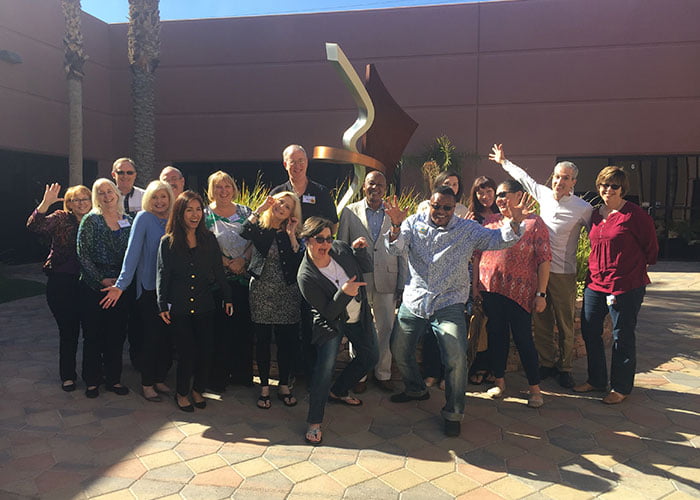An Appreciative Inquiry Model for Healthy Boundaries
My late father (born in 1922) used to say his father only ever gave him one piece of parenting advice: “Let your yes be your yes and your no be your no”. This spark of ancestral wisdom ignited a warm glow of trustworthiness between us: it gave me confidence he recognised what was valuable and essential, and he knew where the limits lie. He trusted me to learn from natural consequences, and to discern my own values, needs, capabilities and boundaries.
To recognise, listen to and kindly, clearly communicate my “yes” and my “no” – in a way that respects your “yes” and “no” – is a life-long learning journey for me.
“Boundaries are not rigid lines to keep people out. They are a map that shows people the right way in.” ~ Zoe Crook 
I think of boundaries as energetic cell membranes: semi-permeable containers in the constant business of identification, communication, regulation and isolation. Not unlike entering and exiting a reputable club; where security staff regulate who and what comes in and out, and hospitality staff greet and orientate their arriving and departing guests. Similarly, psychological boundaries are dynamic thresholds of connection: letting in and keeping what we need, letting go of what we don’t, sharing what may benefit ourselves and others, and keeping out what isn’t meant for us.
The KLIO* model sees boundaries as magnetic doorways regulating the directional flow of energy to support a balanced, secure web of interrelatedness. It asks how we may relate to one another in a nuanced way that sustains and improves the integrity of our connections. In negotiating boundaries, it invites us to consider:
What do I choose to keep in that is my private responsibility? (NO to going out)
What do I keep out, that does not warrant access to me, my attention or energy? (NO to coming in)
What is necessary for me to let out, to share with others? (YES to going out)
What will I let in, allowing others to share with me? (YES to coming in)
May These Questions Offer Support
Think of a time when you felt a “yes” that you acted on and things turned out surprisingly well.
Where did you sense and feel this “yes” in your body-mind?
How did you respond to it?
Think of a time you sensed and said “no”, and it had a great result.
How did you know it was a “no”?
What was the value you hold dear that was being discounted?
How may you say “yes” to that value more often?
How have you said “no” in a way that made you feel proud and satisfied?
Think of a boundary someone set with you that really improved your relationship.
What is it about you that allowed things to unfold in the way they did?
What do you admire about the other person and the way they handled the situation?
What are you ready to say yes / no to now, unapologetically? How will this inform your future?
*Klio is the greek word for “glory”. It is also urban slang for “cool”.
Photo by Jordan Madrid on Unsplash


Add your comment now using your favorite social account or Click Here To Login
